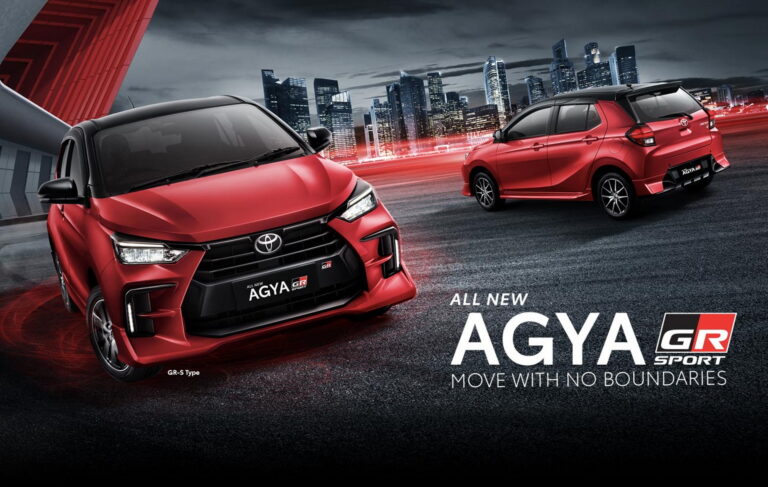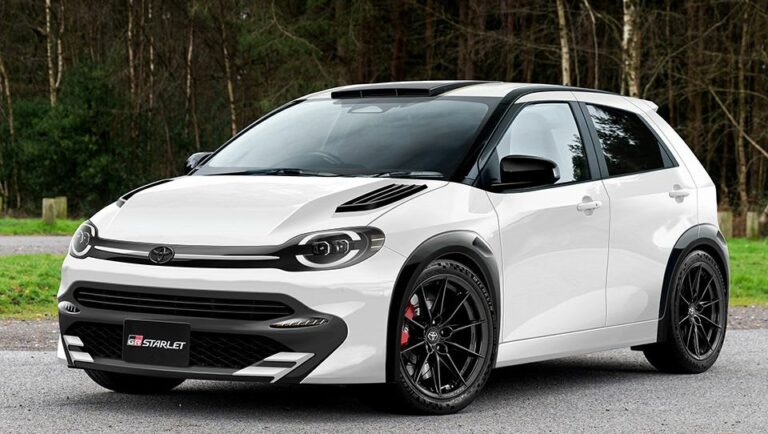Unveiling the 2026 Toyota Harrier: A Comprehensive Overview of its Impressive Specs
Prepare to be captivated as we delve into the remarkable specifications of the highly anticipated 2026 Toyota Harrier. This exceptional vehicle promises to redefine the automotive landscape with its cutting-edge features, impressive performance, and unparalleled sophistication. From its sleek exterior to its technologically advanced interior, the Harrier is poised to set new benchmarks in the automotive industry.
In this comprehensive guide, we will meticulously explore every aspect of the 2026 Toyota Harrier, leaving no stone unturned. We will examine its engine’s capabilities, analyze its exterior design, scrutinize its interior amenities, assess its safety features, and compare it to its formidable competitors. Join us on this journey as we uncover the secrets that make the 2026 Toyota Harrier a true automotive masterpiece.
Engine and Performance

The Toyota Harrier offers a range of engine options to suit different driving needs. The base model is powered by a 2.0-liter four-cylinder engine that produces 170 horsepower and 155 lb-ft of torque. This engine is paired with a continuously variable transmission (CVT) and front-wheel drive. The CVT provides smooth and efficient shifting, while the front-wheel drive layout offers good fuel economy and handling.
For those who want more power, there is a 2.5-liter four-cylinder engine that produces 203 horsepower and 184 lb-ft of torque. This engine is paired with an eight-speed automatic transmission and all-wheel drive. The eight-speed automatic transmission provides quick and responsive shifting, while the all-wheel drive system provides improved traction and stability in all weather conditions.
The top-of-the-line Harrier is powered by a 3.5-liter V6 engine that produces 306 horsepower and 273 lb-ft of torque. This engine is paired with an eight-speed automatic transmission and all-wheel drive. The eight-speed automatic transmission provides quick and responsive shifting, while the all-wheel drive system provides improved traction and stability in all weather conditions.
Fuel Efficiency
The fuel efficiency of the Harrier varies depending on the engine and drivetrain configuration. The 2.0-liter four-cylinder engine with front-wheel drive has an EPA-estimated fuel economy of 24 mpg in the city and 33 mpg on the highway. The 2.5-liter four-cylinder engine with all-wheel drive has an EPA-estimated fuel economy of 22 mpg in the city and 29 mpg on the highway. The 3.5-liter V6 engine with all-wheel drive has an EPA-estimated fuel economy of 20 mpg in the city and 27 mpg on the highway.
Drivetrain Layout
The Harrier is available with either front-wheel drive or all-wheel drive. Front-wheel drive is more fuel-efficient, while all-wheel drive provides better traction and stability in all weather conditions. The all-wheel drive system in the Harrier is a full-time system that sends power to all four wheels at all times. This provides excellent traction on slippery surfaces, such as snow and ice.
Exterior Design and Dimensions

The Toyota Harrier’s exterior design is a blend of sleek lines and bold curves. Its overall shape is that of a compact SUV, with a rakish roofline and a muscular stance. The front fascia is dominated by a large grille with a honeycomb mesh pattern, flanked by sleek LED headlights. The side profile is characterized by a rising beltline and sharp creases, giving the Harrier a dynamic and sporty look. The rear end features wraparound LED taillights and a subtle spoiler.
Dimensions
The Toyota Harrier has the following key dimensions:
– Length: 4,740 mm
– Width: 1,855 mm
– Height: 1,660 mm
– Wheelbase: 2,690 mm
These dimensions make the Harrier a spacious and comfortable vehicle, with plenty of room for passengers and cargo.
Exterior Features
The Toyota Harrier comes with a range of exterior features that enhance its style and functionality. These include:
– LED headlights with automatic leveling
– LED taillights with sequential turn signals
– 18-inch alloy wheels
– Panoramic sunroof
– Rain-sensing wipers
– Power-folding side mirrors
These features give the Harrier a premium and sophisticated look, while also providing added convenience and safety.
Interior Design and Features
The Toyota Harrier’s interior is designed to be comfortable, stylish, and tech-savvy. The cabin features a spacious and airy layout, with high-quality materials and a refined color scheme.
The front seats are supportive and well-cushioned, offering plenty of adjustment options for both the driver and passenger. The rear seats are equally comfortable, with ample legroom and headroom. There’s also plenty of storage space throughout the cabin, including a large glove box, center console, and door pockets.
Infotainment System
The Harrier comes equipped with a state-of-the-art infotainment system. The system features a large touchscreen display, which is easy to use and navigate. The system includes a variety of features, including satellite navigation, Bluetooth connectivity, and a premium sound system.
Safety and Technology
The Toyota Harrier 2026 comes equipped with a comprehensive suite of safety and technology features, ensuring peace of mind and a comfortable driving experience.
The standard safety features include airbags for the driver, front passenger, side, and curtain, as well as electronic stability control, traction control, and anti-lock brakes. It also features driver-assist systems like lane departure warning, lane keep assist, and adaptive cruise control, which helps maintain a safe distance from the vehicle ahead.
Advanced Technology Features
The Harrier 2026 offers an array of advanced technology features to enhance the driving experience. The navigation system provides real-time traffic updates and route guidance, while the adaptive cruise control adjusts the vehicle’s speed to match the flow of traffic. The lane departure warning system alerts the driver if the vehicle starts to drift out of its lane, and the lane keep assist system helps keep the vehicle centered within its lane.
Safety Ratings and Crash Test Results
The Toyota Harrier 2026 has received top safety ratings from various organizations, including a five-star rating from the National Highway Traffic Safety Administration (NHTSA) and a “Good” rating from the Insurance Institute for Highway Safety (IIHS). These ratings are a testament to the Harrier’s robust safety features and its commitment to protecting occupants in the event of a collision.
Trim Levels and Pricing
The Toyota Harrier is available in three trim levels: GX, VX, and ZT. The GX is the entry-level model, while the VX and ZT are the mid-range and top-of-the-range models, respectively.
The GX comes with a range of standard features, including 18-inch alloy wheels, LED headlights, a reversing camera, and a 7-inch touchscreen infotainment system. The VX adds features such as 19-inch alloy wheels, a sunroof, leather seats, and a 9-inch touchscreen infotainment system. The ZT adds features such as 20-inch alloy wheels, a panoramic sunroof, heated and ventilated seats, and a 12-speaker JBL sound system.
The GX is priced from £34,995, the VX from £39,995, and the ZT from £44,995.
The GX is the best option for buyers who are looking for a well-equipped and affordable SUV. The VX is the best option for buyers who are looking for a more luxurious and spacious SUV. The ZT is the best option for buyers who are looking for the most luxurious and feature-packed SUV.
There are also a number of optional packages available for the Harrier. These packages include the Safety Pack, the Comfort Pack, and the Technology Pack.
The Safety Pack includes features such as adaptive cruise control, lane departure warning, and automatic emergency braking. The Comfort Pack includes features such as heated seats, a heated steering wheel, and a rear-seat entertainment system. The Technology Pack includes features such as a head-up display, a wireless charging pad, and a 360-degree camera system.
The optional packages can add a significant amount to the cost of the Harrier. However, they can also add a significant amount of value to the car. Buyers should carefully consider their needs and budget before deciding whether or not to add any optional packages to their Harrier.
Competitors and Market Positioning
The 2026 Toyota Harrier competes in a crowded mid-size SUV segment. Key rivals include the Honda CR-V, Mazda CX-5, Nissan X-Trail, and Subaru Outback.
Compared to its competitors, the Harrier offers a competitive combination of performance, features, and pricing. It boasts a powerful yet fuel-efficient engine, a spacious and well-equipped interior, and a comprehensive suite of safety and technology features.
Target Audience
The Harrier is targeted at families and individuals seeking a practical and stylish SUV with a comfortable and well-connected interior. It appeals to those who prioritize space, comfort, and safety, and are willing to pay a premium for a premium driving experience.
FAQ Section
What sets the 2026 Toyota Harrier apart from its competitors?
The 2026 Toyota Harrier stands out with its exceptional combination of power, efficiency, and advanced technology. Its refined exterior design, coupled with a spacious and well-equipped interior, provides an unparalleled driving experience. Additionally, its comprehensive safety features and impressive fuel economy make it an ideal choice for families and eco-conscious drivers alike.
What are the key highlights of the Harrier’s interior design?
The Harrier’s interior exudes sophistication and comfort. It features premium materials, a user-friendly infotainment system, and ample storage space. The spacious cabin offers a panoramic view, creating a sense of openness and airiness. The seats are ergonomically designed to provide exceptional support and comfort during long journeys.
How does the Harrier’s safety features compare to other vehicles in its class?
The Harrier boasts an array of advanced safety features that surpass industry standards. It includes a comprehensive suite of airbags, electronic stability control, lane departure warning, and adaptive cruise control. The vehicle’s rigid body structure and high-strength materials ensure maximum protection for occupants in the event of a collision.

